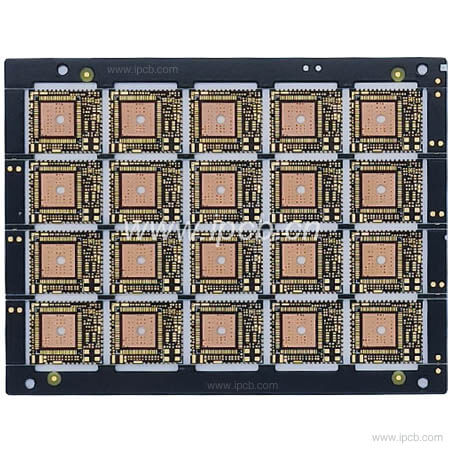The double-sided circuit board is the middle layer of medium, and both sides are wiring layers. A multi-layer circuit board is a multi-layer wiring layer, and there is a dielectric layer between every two layers, and the dielectric layer can be made very thin. The multilayer circuit board has at least three conductive layers, two of which are on the outer surface, and the remaining layer is integrated into the insulating board. The electrical connection between them is usually achieved through plated through holes on the cross section of the circuit board.

advantage:
High assembly density, small size, and light weight. Due to the high assembly density, the wiring between components (including components) is reduced, thereby improving reliability; the number of wiring layers can be increased, thereby increasing design flexibility; A circuit with a certain impedance; it can form a high-speed transmission circuit; it can be equipped with a circuit, magnetic circuit shielding layer, and a metal core heat dissipation layer to meet the needs of special functions such as shielding and heat dissipation; simple installation and high reliability.
shortcoming:
The cost is high; the cycle is long; high-reliability testing methods are required. Multilayer printed circuit is the product of the development of electronic technology in the direction of high speed, multi-function, large capacity and small volume. With the continuous development of electronic technology, especially the extensive and in-depth application of large-scale and very large-scale integrated circuits, multilayer printed circuits are rapidly developing in the direction of high density, high precision, and high-level digitalization. Fine lines and small apertures have appeared., Blind and buried holes, high plate thickness to aperture ratio and other technologies to meet the needs of the market.
The difference between multi-layer PCB circuit board and double-sided board
Multilayer PCB circuit board is a kind of printed circuit board which is laminated and bonded by alternating conductive pattern layers and insulating materials. The number of layers of the conductive pattern is more than three, and the electrical interconnection between the layers is realized through metallized holes. If one double-sided board is used as the inner layer, two single-sided boards are used as the outer layer, or two double-sided boards are used as the inner layer and two single-sided boards are used as the outer layer, the positioning system and the insulating bonding material are laminated together, and the conductive pattern is pressed together. The design requires interconnection, which becomes a four-layer or six-layer printed circuit board, also called a multilayer PCB circuit board.
Compared with the production process of general multi-layer board and double-sided board, the main difference is that the multi-layer board has added several unique process steps: inner layer imaging and blackening, lamination, etchback and de-drilling. In most of the same processes, certain process parameters, equipment accuracy and complexity are also different. For example, the inner metallization connection of the multi-layer board is the decisive factor for the reliability of the multi-layer board, and the quality requirements for the hole wall are stricter than that of the double-layer board, so the requirements for drilling are higher. In addition, the number of stacks for each drilling of the multi-layer board, the speed and feed rate of the drill bit during drilling are different from those of the double-sided board. The inspection of finished and semi-finished multi-layer boards is also much stricter and more complicated than double-sided boards. Due to the complex structure of the multi-layer board, a glycerin hot-melt process with uniform temperature should be used instead of an infrared hot-melt process that may cause excessive local temperature rise.